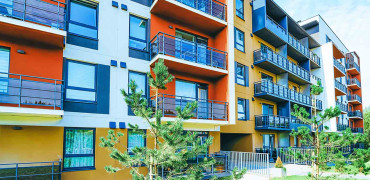Regulations and market demand that focus on energy efficiency and sustainability are impacting the design and operation of data centres worldwide.
For example, the European Union has set an ambitious target of achieving climate neutrality for all data centres by 2030.
Yet it’s also becoming more challenging to improve on the traditional measure of data centre energy efficiency, Power Usage Efficiency (PUE).
The Uptime Institute’s 2022 global survey highlights that in 2022, the average PUE was 1.55. That figure in 2007 was 2.5, showing a significant improvement.
But in 2021, the average PUE was 1.57, and the Institute notes that on energy efficiency, ‘progress has slowed’. PUE improvement is reaching its practical limits.
ERF encapsulates a holistic approach by focusing on efficiency and the reuse of energy
Reusing waste heat
So, the data centre industry (and its customers) is looking for new routes to sustainability.
One of these is capturing and reusing waste heat in other buildings. As a result, a new metric is emerging as a critical benchmark: the Energy Reuse Factor (ERF).
ERF measures how effectively a data centre recycles and reuses its waste energy for purposes outside its primary operations.
This could mean applying the recovered heat to nearby buildings (for example, for producing hot water) or using it in larger-scale heat networks.
The technology is already here
Fortunately, heating technology makes the reuse of data centre waste heat more achievable.
Heat pumps and heat networks are at the forefront of this transformation. Heat pumps, particularly those designed for lower-grade heat, can amplify temperatures to levels suitable for heating in residential and commercial buildings. Heat networks can distribute this recycled heat over larger areas, turning data centres into low-carbon heat hubs.
There are already examples of this type of data centre heat recovery in action. For instance, in Finland, Fortum's innovative heat network leverages waste heat from a data centre, transforming it into a heat production facility.
Similarly, in the Republic of Ireland, the Tallaght district heating network, powered by Mitsubishi Electric’s reversible heat pumps, captures and repurposes waste heat from a data centre for local heating needs.
Early planning is vital
Incorporating heat reuse into data centre operations requires planning from the earliest design and specification stages. The European Code of Conduct for Energy Efficiency in Data Centres provides comprehensive guidelines on heat recovery.
The Code highlights the importance of choosing appropriate technologies and harnessing design principles tailored to the data centre's specific needs and geographical location.
As we progress towards a low-carbon future, ERF is set to become a critical metric for data centres, complementing and perhaps even superseding PUE.
This shift is not merely about meeting new regulatory requirements; it reflects a commitment to environmental stewardship and sustainable practices in the data centre industry.
A paradigm shift
The Energy Reuse Factor (ERF) is more than just a new metric; it's a paradigm shift in how we perceive and measure the efficiency and environmental impact of data centres.
Heat recovery and related technologies are opening the way for a more sustainable future for data centres, underlining their role in the broader context of climate neutrality and energy efficiency.
As the UK aims to decarbonise its heat and reduce its reliance on fossil fuels, data centres have a real opportunity to be part of a low-carbon future.
By focusing not only on energy efficiency but also on the reuse of energy, ERF encapsulates a holistic approach towards a sustainable, low-carbon future, positioning data centres not just as energy consumers but as crucial contributors to our low-carbon heat future.
For more information on heat recovery in data centres, see our new publication: Data centres: Heat Reuse for a Low Carbon future: A guide from Mitsubishi Electric
Shahid Rahman is EMEA – Data Centre Strategic Account Lead (Engineered IT Cooling Solutions)




